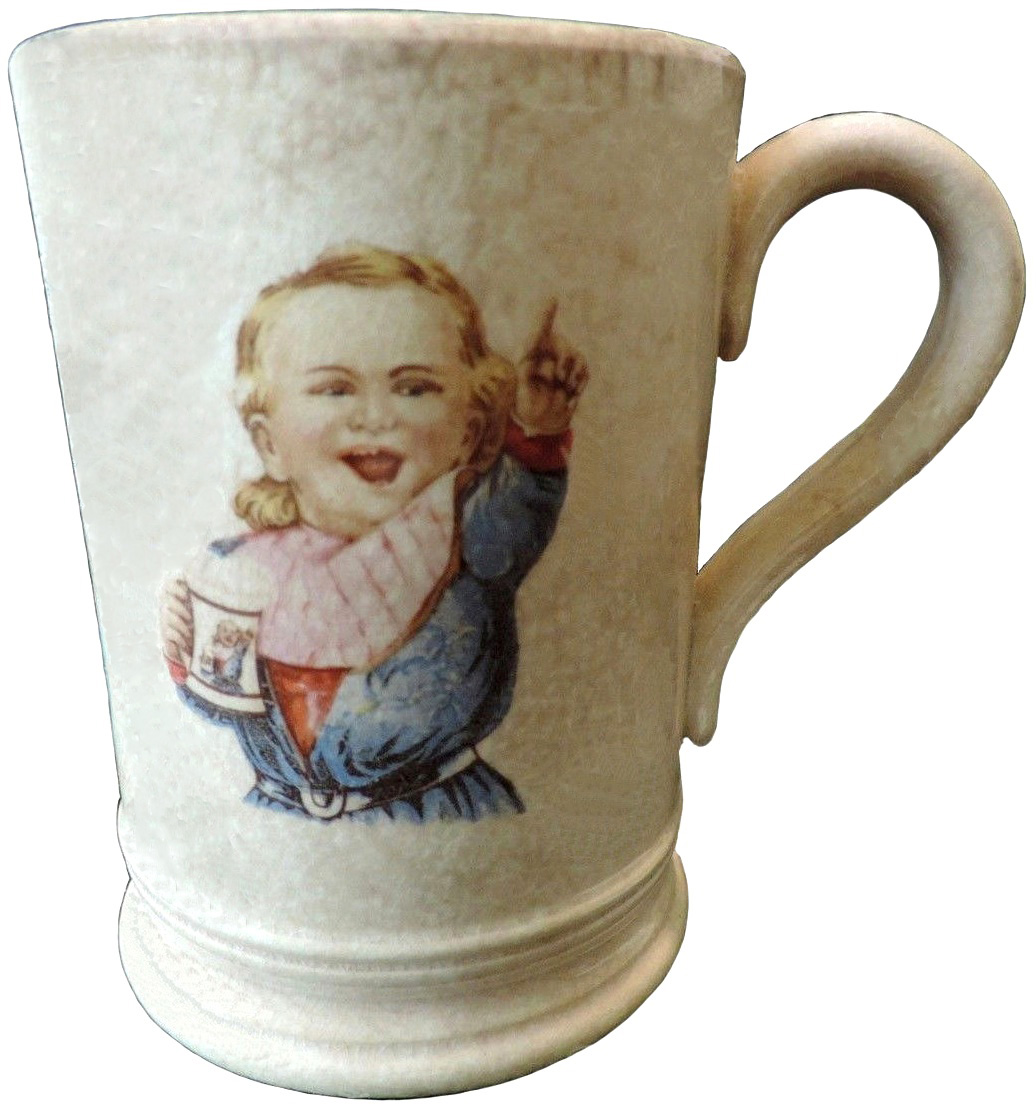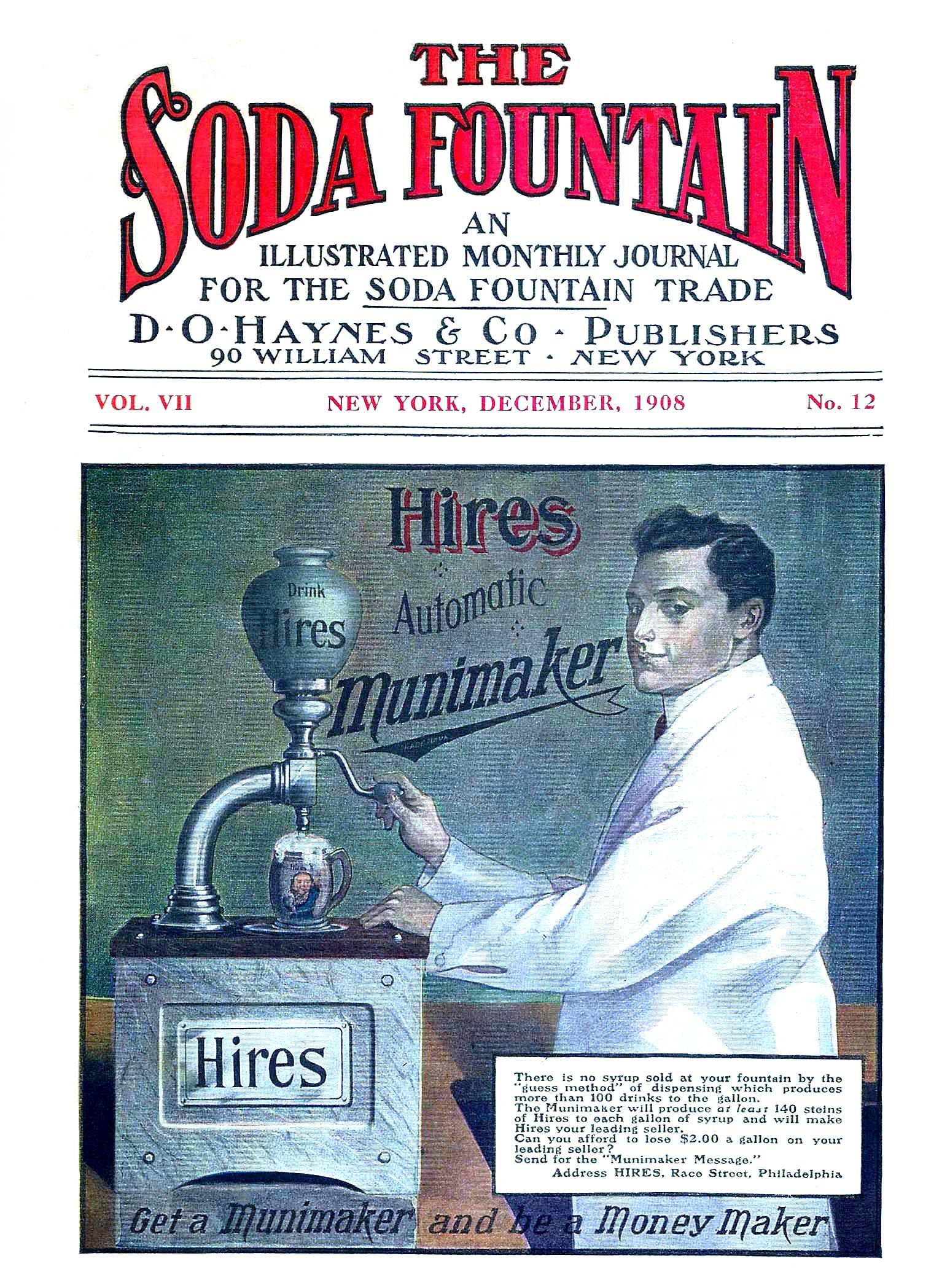1908
IT HAPPENED IN…1908
Prohibitionists stepped up their campaign.
Portions of New York, Ohio, and Colorado banned saloons,
while making or selling liquor became illegal in Tennessee.
The liquor faction argued prohibition would lead to fraud,
secret drinking, and drug abuse.
The Ford Model T, “a motor car for the
multitude,” was introduced October 1st.
William Howard Taft was elected President of the
U.S.
8,000 to 10,000 nickelodeons in the U.S. drew an
estimated 200,000 customers per day.
Newly introduced products included the electric
kitchen mixer and cellophane.
General Electric patented the electric iron and electric
toaster.
Five gallon Hires Fountain Syrup tins were packaged in wooden cases to prevent damage during shipping.
(Figure 1908-01, five gallon
Hires Fountain Syrup tin)
Hires added illustrations of the medals and awards the company won at fairs and expositions to their paper labels. This example was “BOTTLED AND DISTRIBUTED BY S. CANNON & CO., BURLINGTON, VERMONT.” The wording across the top reads “ITS USE IS A HEALTHY HABIT.”
(Figure 1908-02, crown top bottle with paper
label, 9.75” high)
The following four newspaper advertisements ran in Philadelphia during 1908:
(Figure 1908-03, newspaper
advertisement)
(Figure 1908-04, newspaper
advertisement; also in the July 5, 1909 Kansas City [Missouri]
Star newspaper)
(Figure 1908-05, newspaper
advertisement)
This advertisement indicates Purock was “Delivered by our wagons to all parts of the city in sealed, sterilized bottles at 40¢ the case. From Druggists at 15¢ the gallon."
(Figure 1908-06, newspaper
advertisement)
This double-sided, die-cut, cardboard fan was produced for The College Ice Store in Dover, New Hampshire by F. A. Schneider, Lithographer, © 1908. In addition to Hires Root Beer, the store sold soda, candy, postcards, ice cream, and "the most Popular and Best Brands of Cigars and Cigarettes." The metal staples used to attach the handle have rusted with age.
(Figure 1908-07, die-cut,
cardboard fan, front)
(Figure 1908-07, die-cut,
cardboard fan, back)
(Figure 1908-07.5, newspaper
advertisement, June 8, 1908, 2.5" x 6.5")
Hires introduced another new product in 1908: “Try
Hires Cork Securers. Fit
any bottle. Last forever.
10¢ a dozen postpaid.”
(Figure 1908-08, newspaper advertisement,
July 14, 1908)
(Figure 1908-09, newspaper
advertisement)
This real photo postcard pictures a bear drinking from a bottle.
The sign reads “I DRINK HIRE’S ROOT BEER AT TRAEGER AND WILLIAMS –
St. Michael, Alaska. St.
Michael was a trading post and the northernmost Russian settlement in
Alaska. Note the steamboat
in the background.
(Figure 1908-09.5, real photo
postcard, front)
(Figure 1908-09.5, real photo
postcard, back)
(Figure
1908-10, The
Bulletin, Philadelphia)
This easel-backed, cardboard display held 24 Hires' Cork Fasteners.
(Figure 1908-11, Hires’ Cork
Fasteners cardboard display, 15.0” x 13.0”)
(Figure 1908-11.5,
Philadelphia newspaper advertisement)
These stoneware syrup jars were manufactured by
Robert M. Green & Sons in Philadelphia, Pennsylvania.
Each has “Drink Hires 5¢” printed on both sides.
This was the first dispenser Hires utilized with a pump that had
a spigot at the top, rather than at the base.
This design change was made to eliminate problems with sugar in
the fountain syrup hardening over time, causing base-installed spigots
to clog. The illustrated
examples are 15.0" tall with 8.0" diameter bases. They have
slightly different style pumps.
(Figure 1908-12, stoneware
syrup jar with top pump spigot)
(Figure 1908-13, stoneware
syrup jar with top pump spigot)
This similarly-designed stoneware syrup jar featured the addition of a pedestal base.
(Figure 1908-13.5, stoneware
syrup jar with pedestal base and top pump spigot)
The base of this stoneware mug was stamped by the International Pottery Company, the Trenton, New Jersey firm that manufactured these mugs.
(Figure 1908-14, stoneware
mug, front, 4.0” tall, 3.0” base diameter)
(Figure 1908-14, stoneware
mug, back, 4.0” tall, 3.0” base diameter)
Charles E. Hires included these comments in “Some Advertising
Reminiscences 1869-1913:”
The transition period in our business came when the
bulk of the soft-drink trade was shifted from the cellar at home to the
soda fountain on the corner.
It brought with it a whole lot of new problems, among which was
our old friend substitution in a more subtle guise than ever.
How was the consumer going to know whether he was served with
Hires at the fountain or with something else?
When he bought a package of the household extract to take home,
he could read the proprietor’s name on the label, but there is no label
on a glass of root beer at a soda fountain.
Labeling glasses won’t solve it, because the clerk will keep the
bottle under the counter where the customer can’t see it.
Indeed, I hesitated a long time about putting a fountain syrup on
the market because of those facts, and because I felt that it was
necessary to the success of the drink that the syrup and water be mixed
more accurately than the average soda clerk is accustomed to handle
them.
The dispensing machine which we call the “Munimaker”
solved both problems at once.
It mixes the syrup and the soda water automatically and
instantly, in exactly the right proportions.
It identifies the resulting drink as Hires, for the dealer would
be a bold pirate indeed who would venture to serve any other kind of
root beer syrup through the machine.
He would be liable for violating the patent laws and his
contract, and we would catch him without delay because his purchases of
Hires syrup with us would stop while he was substituting, and one of our
men would be around to see if his machine was out of order.
Best of all, the Munimaker has opened up a great many new channels for the sale of the goods – in places which do not provide regular soda fountains. We have installed a great many in department stores, in Y.M.C.A. buildings, and even in saloons.
Here is another instance where Hires sent advertising
copy to a publication that printed it word for word.
This “article” ran in the November, 1908 issue of
The Druggists Circular trade
journal.
Hires’ Automatic “Munimaker.”
On pages 52 and 53 of this issue the Charles E. Hires
Company, Broad and Vine streets, Philadelphia, offers to soda water
dispensers the ‘munimaker,��� a new automatic dispensing apparatus for
Hires’ root beer.
Concerning this new dispenser and its development, the company says:
“The invention of the Hires automatic ‘munimaker’ has
back of it a very interesting history.
While working with the soda-fountain trade we were continually
confronted with two conditions which we knew should not exist.
First, that Hires’ root beer was not being rightly dispensed;
second, that no soda fountain drink was being dispensed with the right
profit.
“The second condition was due to the first. Under the prevailing method of dispensing at the soda fountain, the dispenser was compelled to guess the amount of syrup necessary to be used for each drink. Guess work always means waste, as it is impossible for a dispenser in his haste to gauge exactly with the eye – in guessing he invariably overdrew the amount of syrup necessary for the drink. This comes from the fact that a customer is less apt to complain if the drink is too heavy than if it is too light. Therefore the dispenser does nothing more than anyone else would do. He moves along the lines of least resistance.
"We gained nothing through the dispenser’s drawing
too much syrup because it tended to make the drink unsatisfactory, and
the dispenser gained nothing because he lost a fraction of an ounce of
syrup with each drink, which properly belonged to his profits.
“Anyone owning a soda fountain, who is interested in these things, can learn a great deal by a little investigation and this investigation can apply to himself as well as to those under him. He has but to ascertain by actual count the number of drinks he gets from each gallon of syrup. This can be done by measuring the syrup in the morning; keeping track of the number of drinks of each flavor served during the day, and then measuring the syrup at night. This is about what he will find – that a gallon of syrup requiring one ounce to the glass will produce about 100 drinks and the syrup requiring two ounces to the glass will produce 51 or 52 drinks. As a matter of fact, he should get 128 drinks from each gallon of one-ounce-to-the-glass syrup and 64 drinks from a two-ounce-to-the-glass syrup. This loss is so gradual that is scarcely perceptible in the individual drink.
“We believed that if we could make an apparatus that
would serve Hires right and give the dispenser a profit which he was
entitled to, we would find a ready market for it.
This was very readily proven in the distribution of the Hires
dispensing keg and the fact that the dispenser was willing to pay a fair
price was promptly shown, for we started to market this apparatus at
$25. Finding we could not
make it at that figure we raised the price to $50, and then to $75.
Each time we raised the price we made the apparatus better, and
each time we raised the price dispensers bought more of them until by
the time we discontinued its distribution we had the output up to more
than 6,000.
“During all this time we were carrying on active
experiments and in this process we finally discovered that the faults of
the keg were insurmountable.
We also found that we could not patent the keg for, though it was
original with us, it contained no novel feature.
Wood is a very difficult article to handle mechanically.
We then tried to eliminate the wood by experimenting with a metal
keg for one whole year, in our place of business, putting it through the
same trial it would have to undergo at the soda fountain.
It failed to make good for several reasons.
This discovery practically eliminated the keg, and necessitated
our trying something different altogether.
In this latest move we determined to be original as well as
novel, so that would not only patent the design but the mechanism, and,
thus came about the Hires automatic ‘munimaker.’
We put this through eighteen months of counter practice before we
announced it to the trade.
To go into details of how it reached its present equipment would mean
simply a recountal of a number of petty obstacles, some of which were
almost large enough to throw the apparatus out of service.
The vagaries of gas pressure, for instance, are something little
known to the average man.
Suffice it to say that the final outcome is an apparatus which we
believe to be perfect in every respect.
We shall of course go on making alterations here and there in the
direction of improvements but it is the one apparatus which shall
hereafter be identified with Hires as an automatic dispenser.
It has all the points essential to make this so: mechanism that
will work and materials that will last.
It is an apparatus wholly in harmony with the finest store
fixtures. Its simplicity of
operation cannot fail to appeal to everyone.
It will find its place on every soda fountain because it helps
the dispenser to produce 140 drinks to the gallon of Hires as against
100 when dispensed by the usual guess method.
That means 40 drinks more than the dispenser will make from any
other five-cent syrup, or $2.
Two dollars to the gallon means $100 to the barrel.
It is not difficult to see that the dispenser is thus enormously
the gainer in dollars and cents.
“We have made it necessary for us to sell forty
drinks more to each gallon of syrup than the dispenser would get in the
usual guess method. This is
an evidence of our confidence in the apparatus and we are willing to
sell forty drinks more to the gallon for him, in order to get a better
flavor for we know that once a dispenser gets Hires just as he wants it,
he will want more Hires syrup and there will be more people who will
drink Hires. We send him
2,000 more customers and he gets 2,000 more drinks to the single barrel
of syrup.
“We do not doubt for a moment that the ‘munimaker’
will find a tremendous success because it means a tremendous profit to
every man who has it on his counter.”
This Munimaker advertisement ran on facing pages in
The Western Druggist
magazine.
(Figure
1908-15, The
Western Druggist, November 1908, page 8)
(Figure
1908-15, The
Western Druggist, November 1908, page 9)
This single page advertisement was placed in
The Western Druggist the
following month.
(Figure
1908-16, The
Western Druggist, December 1908)
The front cover of the December, 1908 issue of
The Soda Fountain monthly
journal pictured a storekeeper using a Munimaker to fill a Hires stein.
(Figure
1908-17, The
Soda Fountain, front cover, December 1908)

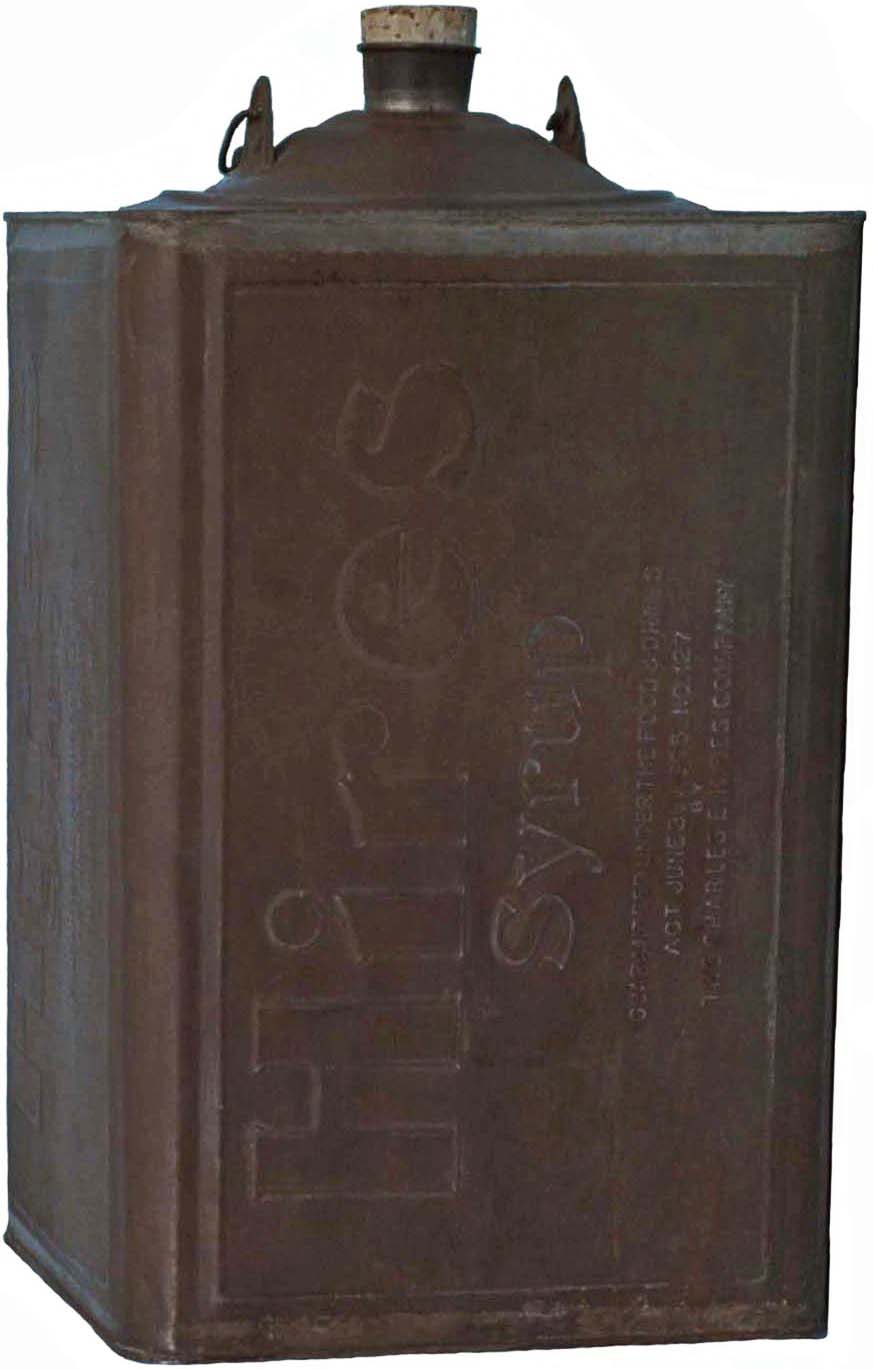

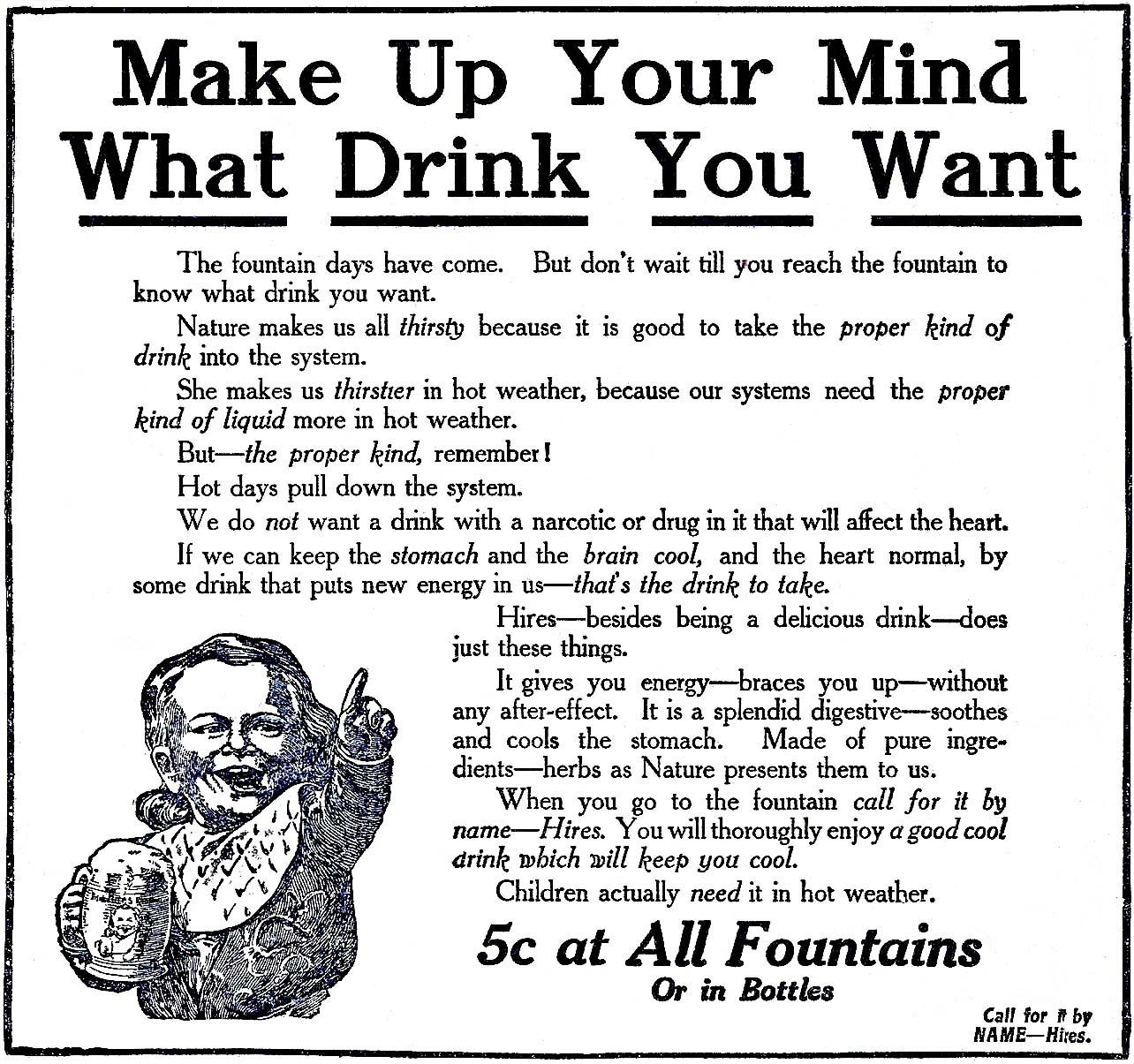

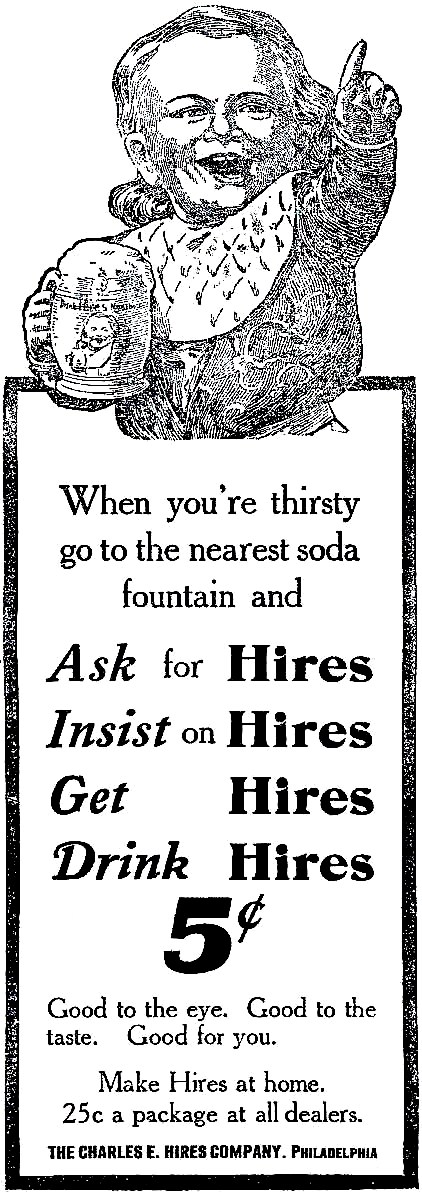

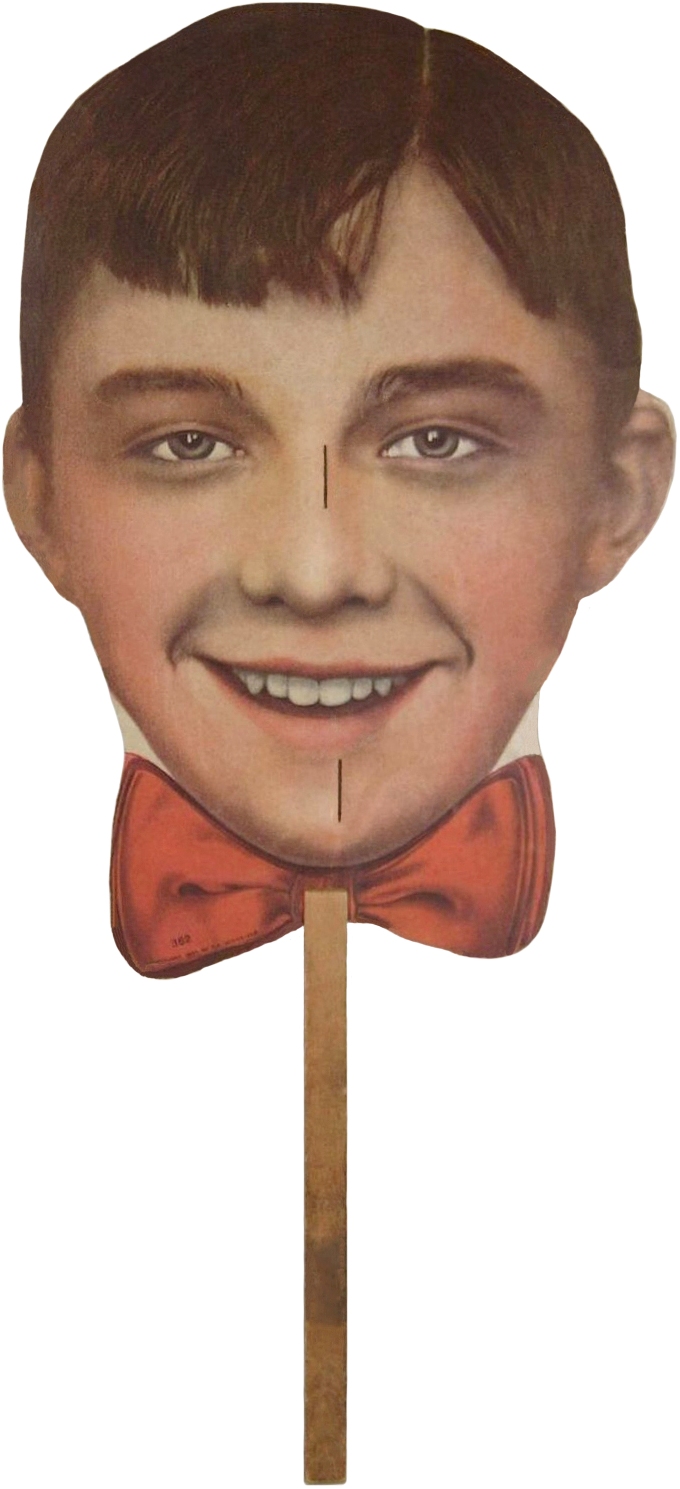
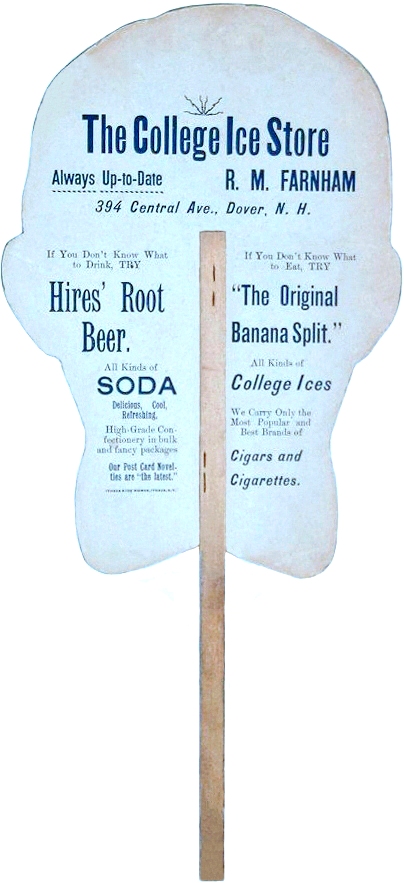

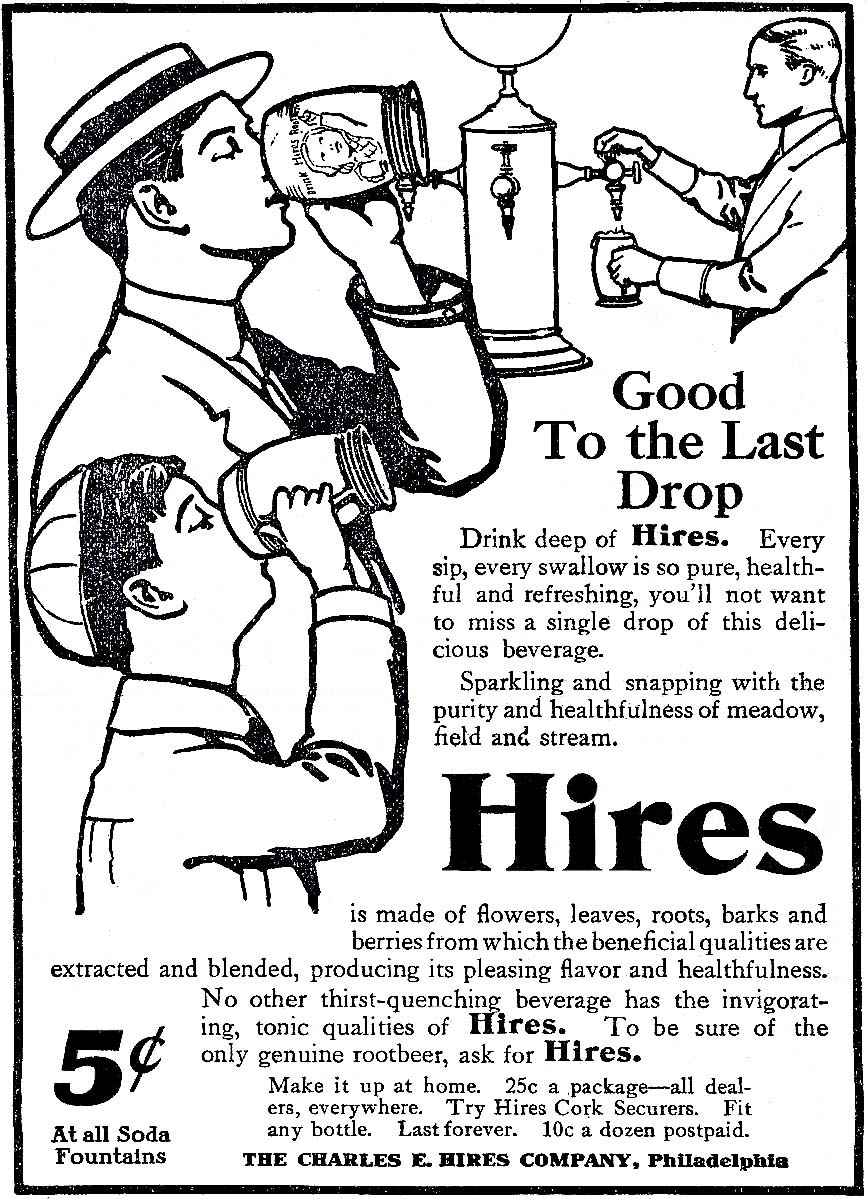
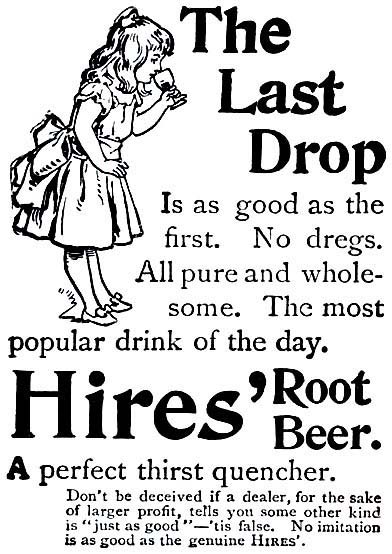
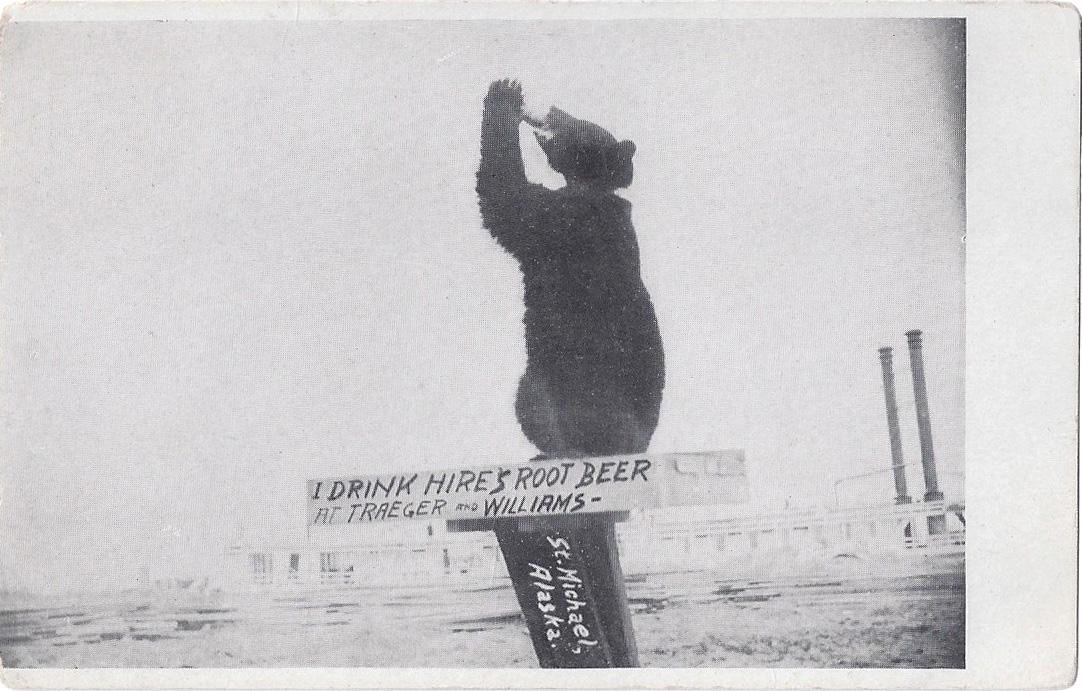
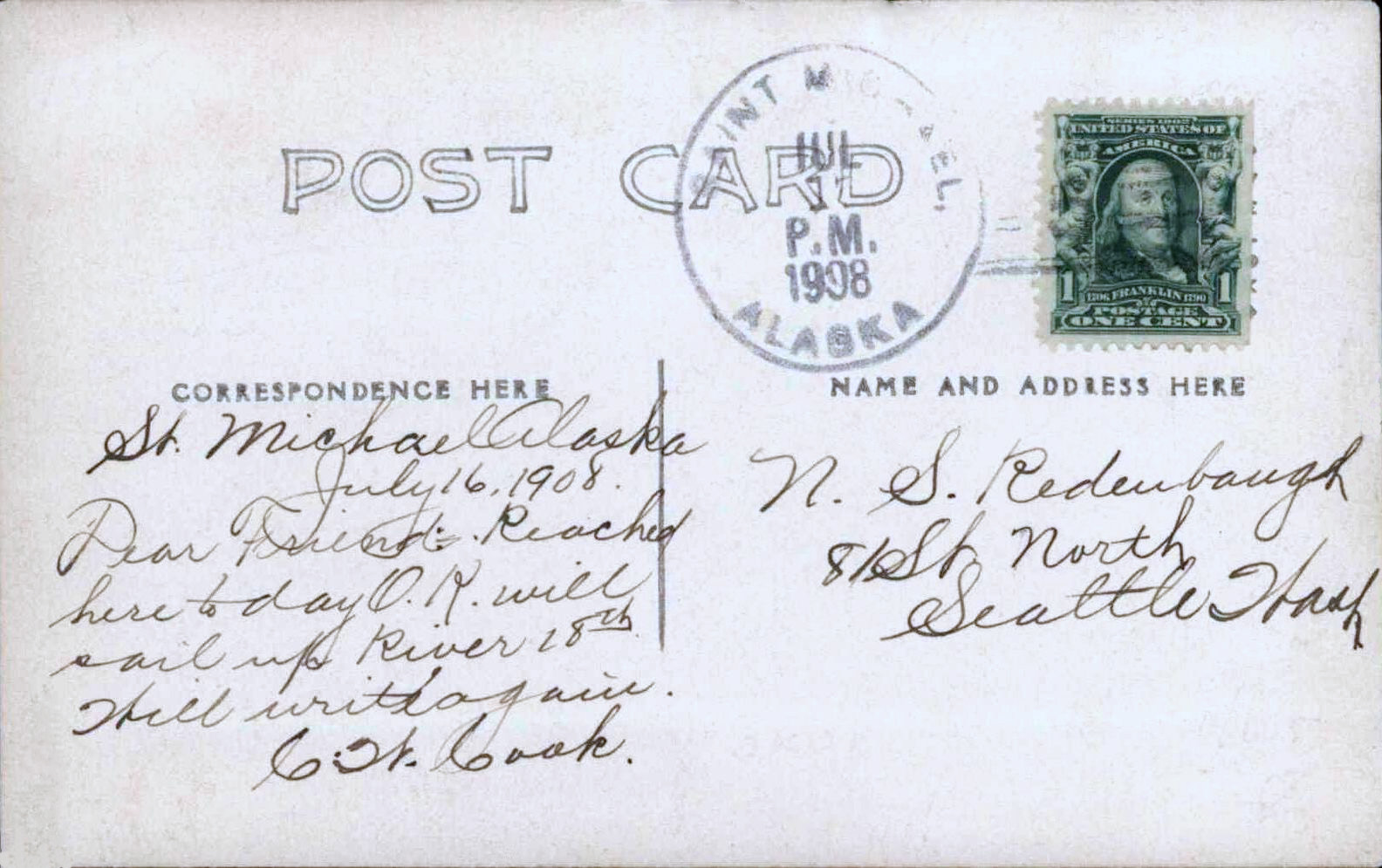
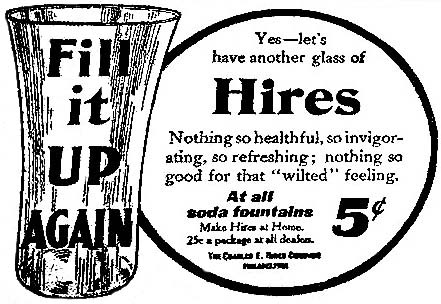

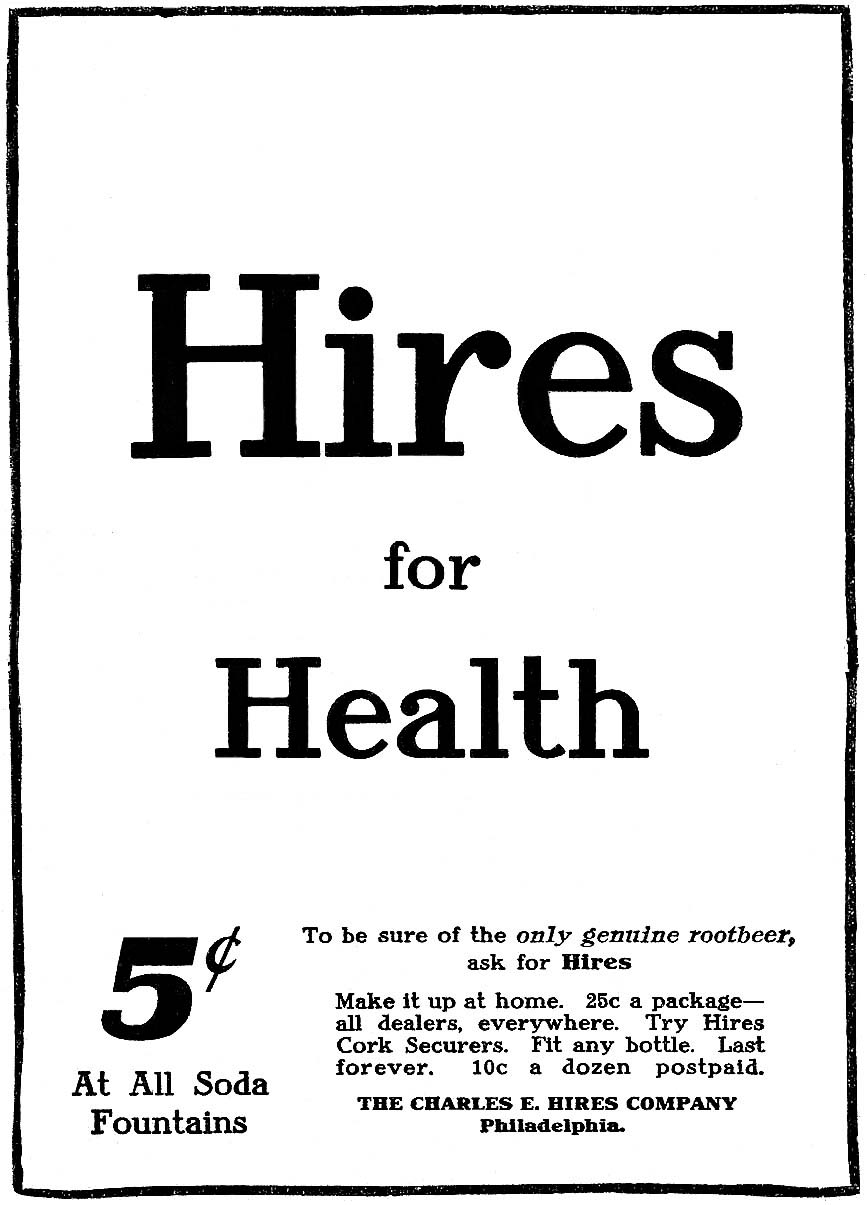

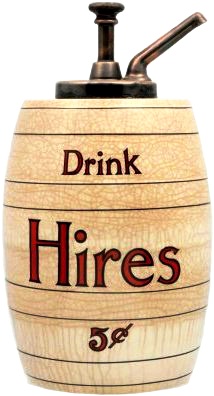
%205¢%20(on%20both%20sides)%20stoneware%20syrup%20jar%20with%20pedestal%20base%20and%20top%20spigot.jpg)

